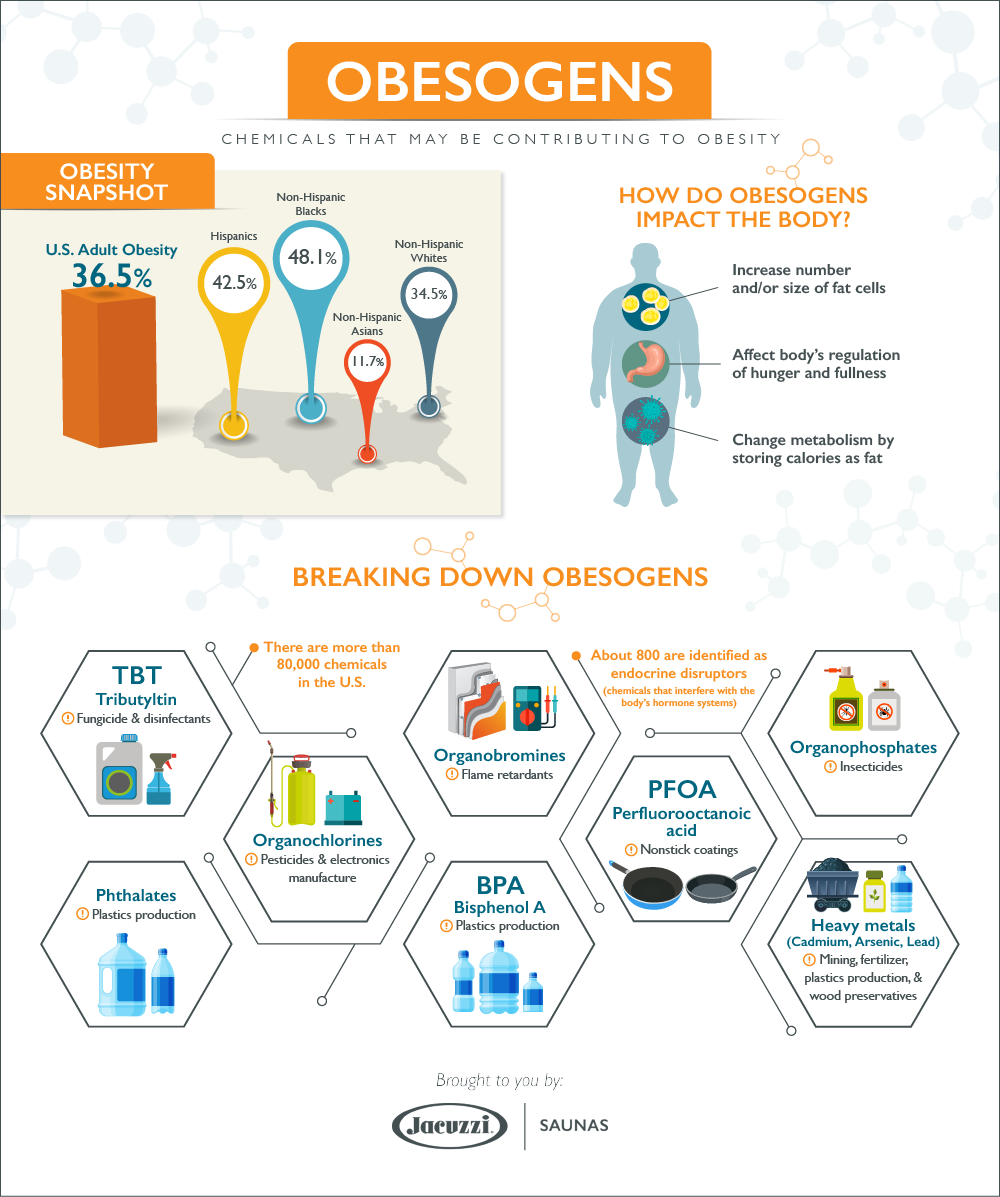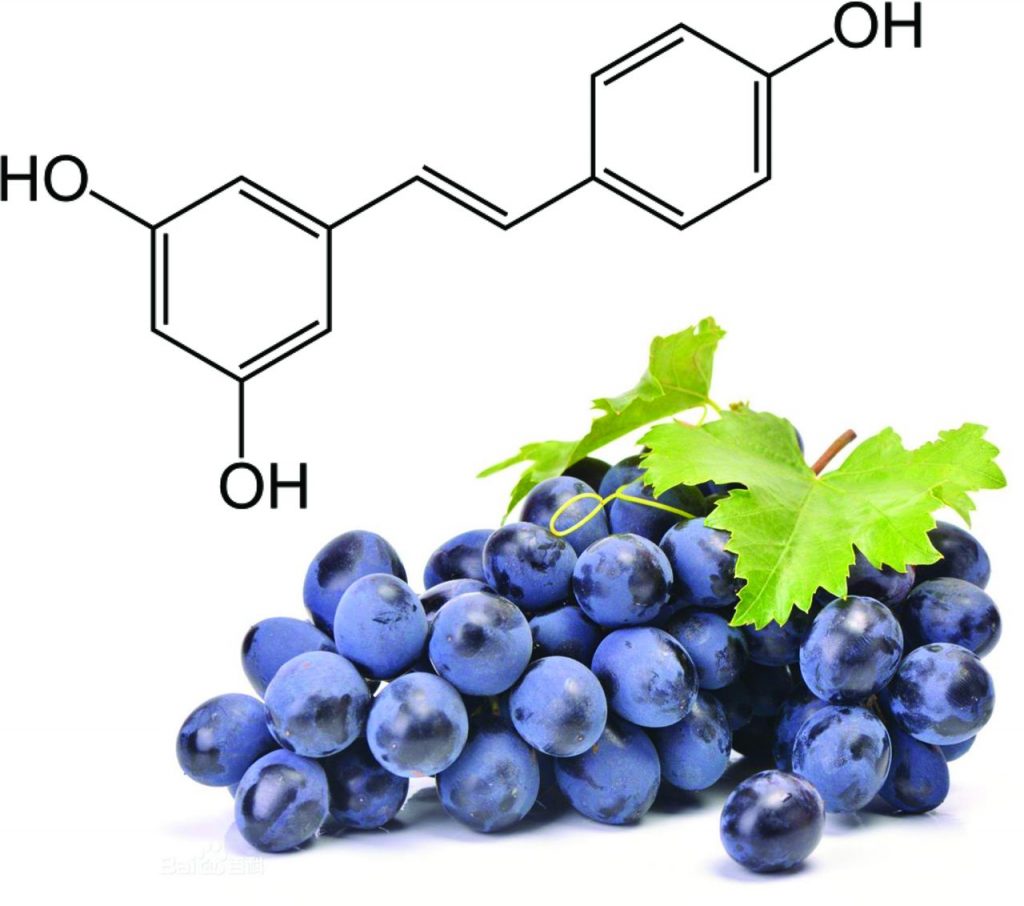One of the major issues causing problems with losing weight and maintaining a healthy weight is due to the presence of chemicals in the body – environmental toxins.
Some of these chemicals are called “obesogens” – because they cause obesity and it is almost impossible for an individual to lose weight until these compounds are removed.
A key compound in this category is phthalates, often referred to as plasticizers.
Weight issues for individuals have reached epidemic proportions across the world – in the U.S. alone, 39.8% of adults aged 20 and over are obese.
Historically, the suggested solution to this significant issue was to eat less and exercise more – in fact this is the advice that most MDs will currently suggest to their patients who are struggling with weight issues.
Losing weight and maintaining a healthy weight is certainly not as simple as eating less and exercising more, although these factors can provide benefits.
Other factors may include, and this is certainly not an exhaustive list the following – hormonal imbalance, including elevated cortisol levels, inflammation, genetic mutations, a diet which includes poor quality food sources, lack of sleep, stress and many more.
The way to rid the body of these chemicals is through a supervised detox program.
This should be done under the supervision of a health care practitioner knowledgeable in this area as freeing up these chemicals can cause significant problems if the body has not been prepared properly to excrete these chemicals.
Following is an article published by Functional Medicine University which discusses this topic.
Difficulty Losing Fat? This May Be the Cause
Ronald Grisanti D.C., D.A.B.C.O., DACBN, MS, CFMP
Obesity has hit epidemic proportions and the world is desperate to do anything to lose their unwanted fat.
Although eating a healthy diet and exercise is paramount to losing fat, there is one little unknown fact that will prevent millions of people from ever losing fat.
According to the US government this one thing is the considered the number one pollutant in the human body and will put a quick halt to ever reaching your desired level of fitness and fat loss.
One of the major causes of the obesity epidemic is the unprecedented level of phthalates or plasticizers.
The problem with these toxic environmental toxins is the fact that they are difficult to impossible to avoid. In fact they are found in every species even in the most pristine wild.
In fact we have so damaged the chemistry of even animals in the wild that the polar bears in the Arctic have human diseases such as hypothyroidism and osteoporosis.
Phthalates are the highest pollutant in the body being over 10,000 times higher than any of the thousands of other environmental toxins.
In fact they are so pervasive that now children six years of age have levels that used to take adults until the age of 40 to accumulate.
Phthalates are the highest pollutant in the body being over 10,000 times higher than any of the thousands of other environmental toxins.
Phthalates are the highest pollutant in the body being over 10,000 times higher than any of the thousands of other environmental toxins. –
The government agencies, scientific and medical literature have
clearly documented that a huge amount of these environment toxins
(phthalates) come from our water, soda and infant formula bottles, food
packaging, cosmetics, nail polish, mattresses, couches, carpets,
clothing, medications, styrofoam cups, IVs, vinyl flooring, construction materials, home wiring, computers, industrial and auto exhausts, etc.,
The sad point is the fact that these toxins stockpile in the body and overwhelm our ability to detoxify them.
We routinely measure them with a wonderful test called Phthalates & Parabens Profile (https://www.gdx.net/product/phthalates-parabens-test-urine)
In addition to the damage these environmental toxins do to the biochemistry of losing fat they have also been known to be associated with difficult to treat chronic fatigue syndrome,fibromyalgia, ADD, syndrome X, diabetes, arteriosclerosis, allergies, and much more.
In fact the label that a disease has is now unimportant. All we care about is what caused the disease and what biochemical corrections are necessary to get rid of it and actually bring about a true solution, a word you rarely hear in drug-oriented medicine.
What is even worse is the fact a pregnant mother’s phthalate levels (look at how many are continually drinking from plastic water bottles, etc., thinking that it’s something healthful) hugely influence not only the development of the child’s brain and glands, but even future fertility and cancers in their unborn children, not to mention, of course, obesity.
What you need to understand and something the researchers have forgot to mention is the fact that fat stores a huge amount of our chemicals, so the fatter you are the more the difficult it is to lose fat. Interesting and at the same time depressing.
The bottom line is many people will never lose weight or solve their medical problems because they have not gotten rid of the phthalates and other environmental pollutants that have damaged their chemistry and genetics.
One of the key ingredients to ridding the body of these harmful toxins is first to do what you can to avoid it (STOP DRINKING OUT OF STYROFORM CUPS and PLASTIC BOTTLES) and invest in a far infrared sauna
References:
Heindal JJ, Endocrine disruptors and the obesity epidemic, Toxicol Sci 76; 2:247-49, 2003
Baillie-Hamilton PF, Chemical toxins: a hypothesis to explain the global obesity epidemic, JAIt Complement Med 8;2:185-92, 2002
Alonso-Magdalena P, et al, The estrogenic effect of bisphenol A disrupts pancreatic B-cell function in vivo and induces insulin resistance, Environ Health Perspect 114:106-12, 2006
The Hundred Year Diet in the Wall Street (May 10, 2010, A I5)
Vom Saal FS, Welshons WV, Large effects from small exposures. II. The importance of positive controls in low-dose research on bisphenol A, Environ Res, 100;1:50-76, Jan. 2006
Feige JN, et al, The endocrine disruptor monoethyl-hexyl phthalate is a selective peroxisome proliferator-activated receptor gamma modulator that promotes adipogenesis, JBiol Chem 282:19152-66, 2007
Hatch EE, et al., Association of urinary phthalate metabolite concentrations with a body mass index and waist circumference: a cross-sectional study of NHANES data, 1999-2002, Environ Health 7:27, 2008
Clark K, et al, Observed concentrations in the environment. In: The Handbook of Environmental Chemistry. Vol 3, Part Q. Phthalate Ester (Staples CA, ed). New York: Springer, 125-177, 2003
Feige JN, et al, The pollutant diethylhexyl phthalate regulates hepatic energy metabolism via species-specific PPARa-dependent mechanisms, Environ Health Persp, 118; 2:234-41, Feb 2010
Jaakkola JJK, et al, The role of exposure to phthalates from polyvinyl chloride products in the development of asthma and allergies: A systematic review and meta-analysis, Environ Health Perspect 116:845-53, 2008





